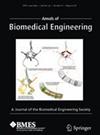A New Coding System for the Identification of Left Ventricular Rotation Patterns and Their Relevance to Myocardial Function
Abstract
Rotational mechanics is a fundamental determinant of left ventricular ejection fraction (LVEF). The coding system currently employed in clinical practice does not distinguish between rotational patterns. We propose an alternative coding system that makes possible to identify the rotational pattern of the LV and relate it to myocardial function. Echocardiographic images were used to generate speckle tracking-derived transmural global longitudinal strain (tGLS) and rotational parameters. The existence of twist (basal and apical rotations in opposite directions) is expressed as a rotational gradient with a positive value that is the sum of the basal and apical rotation angles. Conversely, when there is rigid rotation (basal and apical rotations in the same direction) the resulting gradient is assigned a negative value that is the subtraction between the two rotation angles. The rotational patterns were evaluated in 87 healthy subjects and 248 patients with LV hypertrophy (LVH) and contrasted with their myocardial function. Our approach allowed us to distinguish between the different rotational patterns. Twist pattern was present in healthy controls and 104 patients with LVH and normal myocardial function (tGLS ≥ 17%, both). Among 144 patients with LVH and myocardial dysfunction (tGLS < 17%), twist was detected in 83.3% and rigid rotation in 16.7%. LVEF was < 50% in 34.7%, and all patients with rigid rotation had a LVEF < 50%. The gradient rotational values showed a close relationship with LVEF (r = 0.73; p < 0.001). The proposed coding system allows us to identify the rotational patterns of the LV and to relate their values with LVEF.


 求助内容:
求助内容: 应助结果提醒方式:
应助结果提醒方式:


